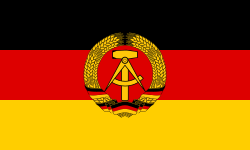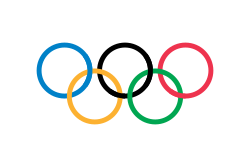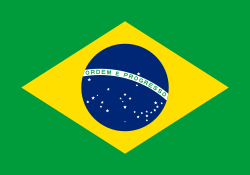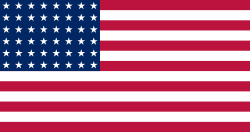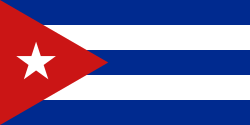Irving Baxter
| Irving Baxter | |||||||||||||||||||
| Voller Name | Irving Knott Baxter | ||||||||||||||||||
| Nation | |||||||||||||||||||
| Geburtstag | 25. März 1876 | ||||||||||||||||||
| Geburtsort | Utica | ||||||||||||||||||
| Sterbedatum | 13. Juni 1957 | ||||||||||||||||||
| Sterbeort | Utica | ||||||||||||||||||
| Karriere | |||||||||||||||||||
|---|---|---|---|---|---|---|---|---|---|---|---|---|---|---|---|---|---|---|---|
| Disziplin | Stabhochsprung, Hochsprung | ||||||||||||||||||
| Verein | Penn Quakers | ||||||||||||||||||
| Medaillenspiegel | |||||||||||||||||||
| |||||||||||||||||||
| |||||||||||||||||||
Irving Knott „Irv“ Baxter (* 25. März 1876 in Utica, New York; † 13. Juni 1957 ebenda) war ein US-amerikanischer Leichtathlet, der bei den Olympischen Spielen 1900 in Paris in fünf verschiedenen Sprungdisziplinen insgesamt zweimal Erster und dreimal Zweiter wurde. Seine Stärke waren die nur bis 1912 olympischen Disziplinen Hoch-, Weit- und Dreisprung aus dem Stand.
Der für die Universität Pennsylvania startende Baxter ist der einzige Doppelolympiasieger im Hoch- und Stabhochsprung der Geschichte. Er befand sich fünf Jahre lang an vorderster Stelle auf der Liste der weltbesten Hochspringer: 1900 an 1. Stelle (1,91 m), 1897 an 2. Stelle (1,88 m), 1898 und 1899 an 3. Stelle (1,90 m bzw. 1,89 m) und 1901 an 4. Stelle (1,85 m).
Erfolge
National
- Hochsprung: AAU-Meister 1897 (1,88 m), 1898 (1,83 m), 1899 (1,85 m), 1900 (1,85 m) und 1902 (1,71 m) sowie IC4A-Meister 1899 (1,88 m)
- Stabhochsprung: AAU-Meister 1899 (3,27 m)
International
- Kanadische Meisterschaften: Sieger im Stabhochsprung 1899 (10'8" = 3,25 m)
- AAA-Meisterschaften in Großbritannien: Sieger im Hochsprung 1900 (1,88 m) und 1901 (1,80 m) sowie im Stabhochsprung 1901 (3,00 m)
- Olympische Spiele 1900 in Paris
- Gold[1] im Hochsprung (1,90 m) vor dem Iren Patrick Leahy (1,78 m) und dem Ungarn Lajos Gonczy (1,75 m)
- Gold im Stabhochsprung (3,30 m) vor seinem Landsmann Meredith Colket (3,25 m) und dem Norweger Carl Albert Andersen (3,20 m)
- Silber im Standhochsprung (1,525 m) hinter Ray Ewry (1,655 m) und vor Lewis Sheldon (1,50 m), beide USA
- Silber im Standweitsprung (3,135 m) hinter Ray Ewry (3,302 m) und vor dem Franzosen Émile Torcheboeuf (3,035 m)
- Silber im Standdreisprung (9,95 m) hinter Ray Ewry (10,58 m) und vor Robert Garrett (9,50 m), beide USA
Weblinks
- Biographie (Memento vom 23. Februar 2012 im Webarchiv archive.today)
- http://trackfield.brinkster.net/top10yearly.asp?Year=All&EventCode=MF1
- Irving Baxter in der Datenbank von Olympedia.org (englisch)
Anmerkung
- ↑ a b Eine Auszeichnung der ersten drei Plätze in der heutigen Form mit Gold-, Silber- und Bronzemedaille hatte es 1900 nicht gegeben. Bei einigen Sportarten und Wettbewerben wurden Plaketten aus Silber oder Bronze vergeben.
| Personendaten | |
|---|---|
| NAME | Baxter, Irving |
| ALTERNATIVNAMEN | Baxter, Irving Knott; Baxter, Irv |
| KURZBESCHREIBUNG | US-amerikanischer Leichtathlet |
| GEBURTSDATUM | 25. März 1876 |
| GEBURTSORT | Utica (New York) |
| STERBEDATUM | 13. Juni 1957 |
| STERBEORT | Utica (New York) |
Auf dieser Seite verwendete Medien
Pictograms of Olympic sports – . This is an unofficial sample picture. Images of official Olympic pictograms for 1948 Summer Olympics and all Summer Olympics since 1964 can be found in corresponding Official Reports.
Autor/Urheber: B1mbo, Lizenz: CC BY-SA 2.5
Zeichnung einer Goldmedaille, basierend auf Olympic rings.svg.
Autor/Urheber: B1mbo, Lizenz: CC BY-SA 2.5
Zeichnung einer Silbermedaille, basierend auf Olympic rings.svg.
Autor/Urheber: B1mbo, Lizenz: CC BY-SA 2.5
Zeichnung einer Bronzemedaille, basierend auf Olympic rings.svg.
Olympic Rings without "rims" (gaps between the rings), As used, eg. in the logos of the 2008 and 2016 Olympics. The colour scheme applied here was specified in 2023 guidelines.
Olympic Rings without "rims" (gaps between the rings), As used, eg. in the logos of the 2008 and 2016 Olympics. The colour scheme applied here was specified in 2023 guidelines.
Die Staatsflagge der Deutschen Demokratischen Republik, vom 1. Oktober 1959 bis 3. Oktober 1990
Flag of Second Polish Republic and later People's Republic of Poland in period from March 29, 1928 to March 10, 1980. Red shade used here is HTML "vermilion" #E34234. Proportion 5:8.
Flag of Second Polish Republic and later People's Republic of Poland in period from March 29, 1928 to March 10, 1980. Red shade used here is HTML "vermilion" #E34234. Proportion 5:8.
Olympische Flagge
US Flag with 45 stars. In use 4 July 1896–3 July 1908. Created by jacobolus using Adobe Illustrator, and released into the public domain. This flag was used during the Spanish-American War.
US Flag with 45 stars. In use 4 July 1896–3 July 1908. Created by jacobolus using Adobe Illustrator, and released into the public domain. This flag was used during the Spanish-American War.
US Flag with 46 stars. In use 4 July 1908–3 July 1912. Created by jacobolus using Adobe Illustrator, and released into the public domain.
Other version: Image:US 46 Star Flag.svgUS Flag with 48 stars. In use for 47 years from July 4, 1912, to July 3, 1959.
The Canadian Red Ensign used between 1921 and 1957.
This image has compared for accuracy (mainly colors) using an image from World Statesmen. The only change is making the maple leaves green from red. This image has compared for accuracy (mainly colors) using an image from World Statesmen. The most recent version of this image has changed the harp into one with a female figure; see [http://flagspot.net/flags/ca-1921.html FOTW
The Canadian Red Ensign used between 1921 and 1957.
This image has compared for accuracy (mainly colors) using an image from World Statesmen. The only change is making the maple leaves green from red. This image has compared for accuracy (mainly colors) using an image from World Statesmen. The most recent version of this image has changed the harp into one with a female figure; see [http://flagspot.net/flags/ca-1921.html FOTW
(c) I, Cmapm, CC BY-SA 3.0
The flag of the Soviet Union (1955-1991) using a darker shade of red.

(c) I, Cmapm, CC BY-SA 3.0
The flag of the Soviet Union (1955-1991) using a darker shade of red.

US Flag with 44 stars. In use 4 July 1891–3 July 1896. Created by jacobolus using Adobe Illustrator, and released into the public domain.
US Flag with 46 stars. In use 4 July 1908–3 July 1912. Created by jacobolus using Adobe Illustrator, and released into the public domain.
Other version: Image:US 46 Star Flag.svg






